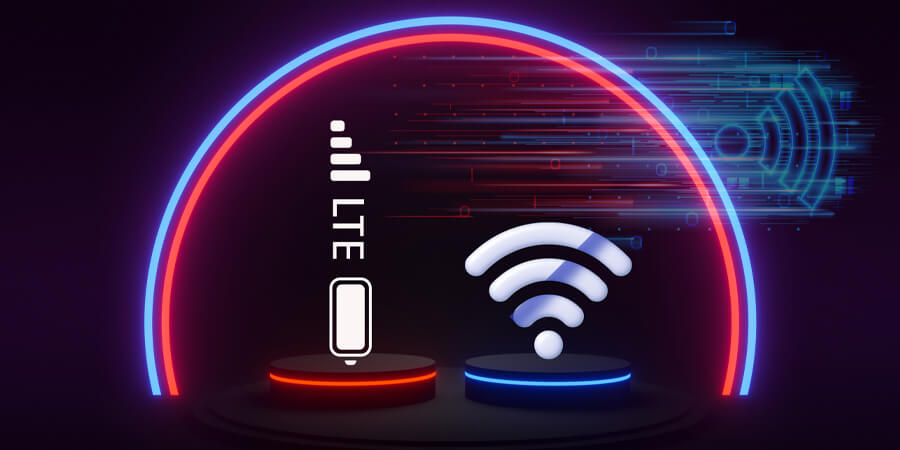The debut of 5G is well underway and is ushering in faster speeds, greater reliability and improved efficiency when compared to the older 4G network. This promising advancement has stirred considerable curiosity, particularly when considering how 5G measures up against the ubiquitous Wi-Fi networks we’re accustomed to. The question is: What are the common points and main differences between 5G and Wi-Fi?
5G: A Game-Changer in Connectivity
5G represents a groundbreaking step in mobile internet connectivity and is poised to reshape how we interact with the digital world. This fifth generation of wireless technology is not merely an incremental upgrade but a significant revolution. Imagine connectivity that is not just faster but also more reliable and efficient than what we’ve experienced with 4G.
This leap in technology ushers in a multitude of exciting possibilities. With its low-latency capabilities, 5G can power applications and services that were previously beyond our reach. Imagine self-driving cars navigating seamlessly, smart cities optimizing resources efficiently, and healthcare services transforming data transmission so very quickly. The promise of 5G extends even further; it will effortlessly accommodate the ever-expanding ecosystem of internet-connected devices. Whether it’s the interconnected world of vehicles, the smart homes we live in, or the wearables adorning our wrists, such as fitness trackers and smart watches, 5G will be the backbone of this interconnected future.
But what truly sets 5G apart is that it allows operators to offer new services like virtual reality gaming on your smartphone or home healthcare monitoring from anywhere in your house, all at lightning-quick speeds. Speaking of speed, 5G is a game-changer here too. It can reach speeds up to 10 times faster than 4G, enabling you to download an HD movie in seconds on your phone instead of minutes. With 5G, you can download a file at over 1 gigabit per second (1 Gb/s), which is on par with some cable internet connections and several times faster than 3G networks.
5G isn’t just about speed. It employs new technology and techniques to handle a greater number of devices simultaneously. This means less time trying to connect to the internet and more time using it for whatever you set out to do. In essence, 5G is not just an upgrade but a game-changer, heralding a new era of connectivity that will impact our lives in profound ways.
The Next Generation of Wireless Technology
Wi-Fi 6 is the latest iteration of Wi-Fi capabilities, representing cutting-edge wireless technology able to support the ultra-fast speeds synonymous with 5G. Beyond speed, Wi-Fi 6 is designed to establish more dependable connections, even in densely populated areas. One of its remarkable features is its ability to accommodate a greater number of devices concurrently on a single network without compromising performance or leading to interference issues. Wi-Fi 6 boasts a substantial boost, delivering four times higher capacity and reducing latency by 75%.
It also showcases a nearly threefold increase in speed compared to its predecessor. Wi-Fi 6 presents an array of advantages over prior wireless generations. Its accelerated speed is just the beginning; it excels in congested environments such as airports, where numerous devices vie for connections. Additionally, it supports a larger number of devices simultaneously, all while maintaining fast and stable speeds for them all.
Comparing 5G Cellular and Wi-Fi
Wi-Fi has been a part of our lives for some time now, but 5G is the new kid on the block, promising lightning speed and enhanced security compared to its wireless predecessors. It’s gradually making its presence felt in various regions. But how exactly does 5G stack up against Wi-Fi?
As the fifth-generation cellular network, 5G is the fastest, most robust and most secure wireless technology to date. However, it’s important to note that 5G isn’t the same as Wi-Fi. It operates as a distinct wireless technology that utilizes radio waves for data transmission. Its primary draw is its remarkable speed, enabling smooth streaming of your favorite movies without buffering and the ability to download massive amounts of content in mere seconds. On the other hand, Wi-Fi boasts advantages in terms of deployment cost, maintenance and scalability, remaining the dominant choice for home and business settings. Wi-Fi has proven itself capable of seamlessly supporting numerous data-hungry devices, including PCs, smartphones, streaming devices and televisions. It’s still the go-to at home and in the office for now.
Further, given the substantial data flow across 5G networks, efficient traffic management is imperative to ensure equitable bandwidth distribution. This is why 5G is designed to learn user preferences based on device behavior, a feature absent in traditional 4G connections. Indeed, while 5G and Wi-Fi 6 share many similarities, they also exhibit significant differences.
In fact, 5G networks offer data transmission speeds that outperform 4G LTE by 20 to 30 times. This can translate to seamless full HD video streaming, online gaming and lightning-fast large file downloads.
Comparitively, Wi-Fi 6 provides comparable speeds to 5G — up to 10 times faster than current standards. It operates on a broader range of frequencies, simplifying device connections in both homes and public areas.
In conclusion, both Wi-Fi and 5G technologies have made significant strides, overcoming historical challenges in providing outdoor wireless data coverage and ensuring reliable indoor connectivity where traditional wireless networks have been established. One thing is sure: they will both continue to play integral roles in our growingly connected lives.






